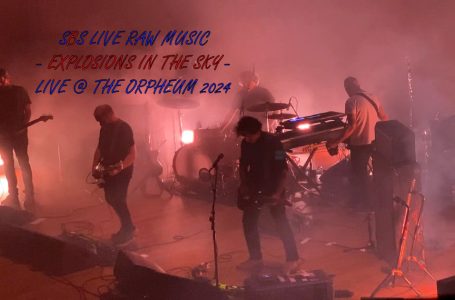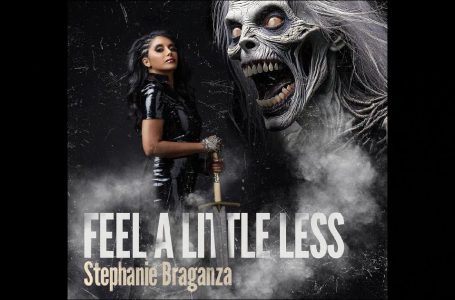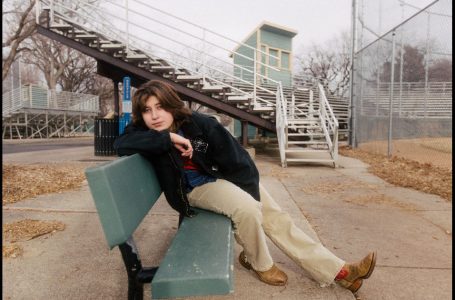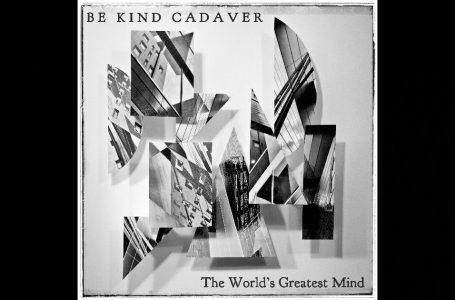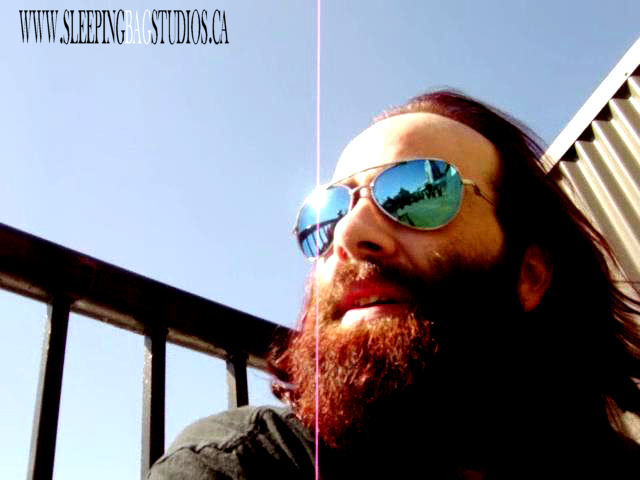The Other Colors

It never ceases to amaze me.
The amount of impact music and artists from around the globe can have on my life is astounding; this band The Other Colors in our interview today is no exception to that. Coming to us all the way from France, this duo consisting of Marie Möör and Laurent Chambert have managed to break through the language barrier and bury themselves deep into my bearded musical heart.
Take a read into this interview and that impact I feel will become crystal clear to you as well; this is one of those bands that is truly out to change the world. You know me well enough already to know I have complete respect for musical goals of that strength and magnitude.
Together they make a strong case as to WHY we need this shift, and this change in our cultures and palettes – they explain quite well how this benefits and impacts all of our lives, collectively.
This was my first opportunity to interview a band or artist from France and I couldn’t be happier with the result. The Other Colors have given us some fantastic music to listen to, coming from all kinds of projects they’re involved in, and an incredibly philosophical interview for you to get to know them and what they’re all about.
From what I can read and what I can “read into” – The Other Colors are all about inspiration. Inspiration for you, inspiration for them – the inspiration to want more, be more and create more. They make intelligent and insightful comments all through this interview that made me think and lit up my brain in places that have been becoming increasingly dim – and I can’t thank them enough for it.
You can consider me inspired by The Other Colors. I hope you are too – enjoy the interview!
Interview with The Other Colors
SBS: Hello and welcome to you, my new friends in The Other Colors! We’re very excited to have you with us all the way from France – that’s new territory for us! I’ll also completely admit to not knowing nearly enough about the current music in your country either, so there’s all kinds of things I’m looking forward to asking you about – but we’ll get there. For now, because you’re brand new to us here at sleepingbagstudios here in Canada, take a moment to introduce yourselves and tell us a little about the kind of music you’re making.
THE OTHER COLORS: Hello everyone!! Our great thanks to SBS and thank you all for your attention. The Other Colors is the name of a musical project from France with Marie Möör and Laurent Chambert.
Charles Baudelaire has written «[…] qui n’a connu ces admirables heures, véritables fêtes du cerveau, où les sens plus attentifs perçoivent des sensations plus retentissantes, où le ciel d’un azur plus transparent s’enfonce dans un abîme plus infini, où les sons tintent musicalement, où les couleurs parlent, et où les parfums racontent des mondes d’idées?»
Why The Other Colors?
In taking this name, we wanted to express the combination between familiarities with an intrusion of the weirdness, a touch of strange feeling. Everybody already knows many of the words for distinguishing the different types of wavelengths within the color spectrum. You will now try to think of a nuance: if you want to remember a new sensation to the perception of colors – you need both an experience, a memory and new words. This way, you can distinguish for a new otherness: the color you have not thought of yet – and a strange feeling starts to rise in your mind. Our ambition: we think that this mechanism can be the same for a perception / reception of music.
SBS: From what I’ve been able to research about you, this project now known as The Other Colors started in 2007. But before that there was another project in existence called Rose et Noire. Now, with them both being labeled by yourselves as “experimental electronica,” what was it that made you feel the need to change the name? What changed musically?
THE OTHER COLORS: Yes, The other colors is the continuation of a first experience under the name Rose et Noire and two albums (“Rose et noire”, “Tracé dans le bleu”). Most of these songs are written with a classical form with verse and chorus, common in popular music and rock. It’s a centripetal configuration around the poetic and imaginary world of Marie Möör. The music then appears like a first dialogue and a real challenge. The main feature characterizing of the Marie Möör’s singing is somewhere in between in a kind of stylized rhythmic speaking called Sprechgesang (entre le parlé et le chanté).
The Other Colors – a subtle shift, a sort of shift in meaning combining a different dynamic – a suite with centrifugal forces. You can say: Rose Et Noire and The Other Colors etc. In practice, it was the name of an event with a lot of guests (avec Christophe Bevilacqua, Jac Berrocal, Marc Hurtado, … le 29 janvier 2007, Petit Théâtre du Gymnase, Paris). Since, Three albums (361, ALF10, Up Up Up).
The time for change is now, devenir, révolution, évolution.
A new music project coming soon.
SBS: I remember when my own band started putting our music online for the first time. We relentlessly put our music into the “experimental electronica” section, though our songs were much more obviously electro-pop, pop-rock or at the very least a much more defined genre nearly every time. It was like a reflection of our confidence nearly, to not just go out and claim we were something more than experimental – know what I mean? When I listened to the music from both The Other Colors and Rose et Noire I hear well-produced, clear and completely interesting to listen to electro-music – so tell me in your words why you feel you still qualify as “experimental” – is that more of a reflection on your creative process?
THE OTHER COLORS: «Expérimentale» it’s a state of mind; this choice can be seen as a preference to the open form concepts. This is a paradoxical situation for a living artist when he’s associated with a particular style of music, finally, a style like a cage. It’s really and often a problematic of the cultural industry, the needs of industry and the business interests, isn’t it? Maybe, “experimental” like no logo.
SBS: My readers know I wouldn’t feel like I was doing my job if I didn’t completely absorb what I can find out about you online…and I’m kind of known for noticing some strange stuff on these pages when doing my research. On your Facebook page, when I was looking you up for the first time I noticed that the listed band members read like this: “Marie Möör, Laurent Chambert, etc.”
So I feel like I should definitely be asking about that “etc.” at the end! Is that a reference to guest stars on the music or are you sending out a subtle message over the internet; is that an open invitation to collaborate with you both?
THE OTHER COLORS: Yes, it’s a discrete signal but it may be a hint as to the direction in which we will transform the project’s form and a reflection about the self-cultivation.
SBS: There was another piece of information I saw that I felt like I needed ask about specifically – I noticed these pictures from the Up Up Up album you did that have “(art performance)” written on them as well. I know that album was released a year ago, but when I see something like the words “art performance” in relation to music – I feel like I missed out on something! What did I miss? What made that an “art performance?”
THE OTHER COLORS: “Quelque chose de nouveau”, 2003 : with this particular work, Marie Möör has performed on stage with video’s projections and dedicated symbolic gestures. The six events related to a contemporary art exhibition (Prosit, Musée d’Art Moderne et Contemporain de Toulouse, Tout m’est égal, Centre National de la photographie à Paris, Le coeur pourri, Ecole d’Art de Bourges, Ce mal qui fait du bien, Le Rectangle, Lyon, Je peins, Centre d’Art Contemporain de Bretigny).
SBS: The beauty of the “experimental electronica” genre is that you also have the largest and most wide open musical canvas to create on by the sheer ability to incorporate ANY sound you could possibly want! Laurent and Marie – would you consider all music to be “art?” What if you were to hear a song by someone else that you disliked – would you still consider that to be someone’s art even if it wasn’t particularly well made? Define art for us!
THE OTHER COLORS: All music can become art when the author exceeds a communication’s problematic. Art doesn’t need to be loved to exist. It’s still a social prescription to consider music to need a judgment for existing. The judgment, good or bad – all that stops. Living with music!
SBS: I also like and appreciate that you both have other artistic and creative outlets. Laurent – I’m assuming you’re behind more of the video work and visual elements to the band, and Marie you add that experience of your career along with your poetic lyrics. The write-up in your bio is an incredible read – I love where it says that you both “knew how to combine research on words, feelings and on sound.” I can totally appreciate what’s being said here – but it’s also dangerously close to the “music is math” theory, like you possess the one and only formula to making a successful song! And that research thing…makes me feel like you studied my brain while I was sleeping and then when I’d wake up the next morning, The Other Colors would be the first thing on my mind! What kind of research are you doing over there guys? What do you mean?
THE OTHER COLORS: We have no theories, just experience!
The Other Colors knew how to combine research on words, feelings, and on sound, the tessitura also, giving birth to an electronic and literary music, proof that these two are not incompatible.
This excerpt is taken from a summary of our press review. Since our first album we have received a lot of reviews from everywhere with repeated and shared ideas about our musical production. It’s an external point of view, our professional mirror.
SBS: I have a gigantic amount of respect for the sheer volume of information that is available about The Other Colors through social media and the internet. You have clearly covered the virtual map and there are links to all kinds of pages from YouTube to Facebook, to the Last FM website and of course your own official pages (There many, many more!) – who is pulling all of this off? That’s an incredible amount of work! How important is it for you to stay connected with the fans of your music and how do you go about that?
THE OTHER COLORS: Today, there is an adequacy between the development of the web and the music. The music grows horizontally and establishes itself as an integral part of the world. Cultural barriers can be removed but our efforts must continue and be intensified for intelligence. Let us be optimistic.
SBS: What we also share deeply in common is our tremendous respect for the combination of words and music in any form. You sound like you’re on a quest when I read your bio. You mention that you make an “electronic and literary music, proof that these two are not incompatible.” Alright – so first off, you already know I completely agree – those two elements are certainly compatible in my musical library. I’ve found since the sheer amount of music on the internet has been available that people seem to be becoming much more open musically – do you still feel like the odds are stacked against you? Will the genre of “experimental electronica” ever gain a mainstream sized acceptance?
THE OTHER COLORS: On the positive side, this time period does appeal to the curiosity of the public, sensitivity and openness to new artistic expressions and new entities, really.
SBS: Laurent – I’ve certainly checked into as many of your sites as I could find and it literally seems like once you learned how to create music and do what you do that you’ve never stopped! There is SO MUCH music out there from you my friend! You obviously have a complete passion to continually create as much as you have been. Tell me about artists that have influenced you in music and what your personal goals are in music. Are you in this to be the best of the genre? Or are you simply making music without a conscious thought to what people might think and just continue making music you like to listen to yourself?
LAURENT: Exactement! After a real preparation, an experience, music is more a matter of trusting one’s instincts and letting go.
SBS: And Marie – tell me about this collaboration between the two of you. What makes it the special entity that it is? I can see that you both occasionally work on your own solo projects as well, but with The Other Colors having been around since 2007, there’s obviously something that pulls you two together to make this music. Describe what makes that magic as best you can.
MARIE: Mysterious Alchemy: the ingredients of which are easy to name but whose mixture is difficult to achieve.
SBS: How was the feedback for the last album Up Up Up? Do you have the opportunity to play these songs live often in Paris where you are?
THE OTHER COLORS: Alas, actually, we could not play the whole album because we had too much work and we need more resources for a sound and light show solo.
SBS: Someone tell me about the video for “Mes yeux bleus dans tes yeux noirs!” This is a fantastic video – simplistic in concept and unbelievably well executed and entertaining. How did it get made and what did you think of it when you saw it for the first time?
THE OTHER COLORS: Less is more parfois c’est mieux (sometimes is better).)
SBS: I’d say throughout my experience in talking to different bands and artists that it’s still a pretty even split between those that need their personal image on screen and those that don’t think it’s a necessary element. Clearly in this video, you’re not in it (Unless that’s your eyeball Marie!) – so I’d assume you don’t feel that it’s necessary to tie your image to the music. So let me ask you this; when making a video, what would you say is the most important element to display visually?
THE OTHER COLORS: The image is made for the eyes and the eye, and that can seriously falsify the perception of the music. We prefer minimalism or sort of off-topic. A professional collaboration with another artistic world, an independent artistic vision, may seem an attractive perspective. Qui vivra verra!
SBS: I literally have no clue on this one – but in making music with lyrics in French, do you consider it difficult to find an audience for your music when all the recognition and attention tends to be given to English speaking bands on a world-wide level? I know that I’ll personally listen to everything, but I also don’t know too many people like me in that way. What do you think?
THE OTHER COLORS: Sure, but it is just temporary, no project can be defeated if it persists on the meaning of life as a value in itself.
SBS: In addition to that – if music is truly a universal language then why do you suppose the majority of people only listen to the music that is made in the language that they speak?
THE OTHER COLORS: Often, for reassuring and comforting the listener – the anxious people. Music is a universal language but can be more, really more, like a native tongue. Music is really a combat, a permanent learning. At first listen with a sound phenomenon, a new music – it sounds like noise. It’s only after a few listenings that you can start to appreciate it and you can start to hear something structured. Mainstream pop culture is often a predigested culture. We think that, first of all, the dominant trends give you a sign, hollow sounds, not a veritable experience exchange, an encounter with the difference, la Vérité est ailleurs.
SBS: How important is it for you to be unique, create new sounds and songs and be original?
THE OTHER COLORS: In an increasingly uniform world, we need other colors like other sensations, other words, other music. What is an increasingly uniform world? The world of the merchandise. We want something else, resolve the problem in any other way, quite a different thing, another reason, a real consistency.
SBS: Before I get to the future – give me an idea about how you see “the end” of The Other Colors. Let’s say that you’ve enjoyed decades of musical success, however you define it, and that it’s the future and you’re beginning to hit retirement age. Will you ride off into the sunset together playing music always or do you think there would be a point where you would want to stop or do something else?
THE OTHER COLORS: In the end it’s above all an egocentric problem. The end doesn’t exist with the Collective, a collective movement. There is no limit, no maximum age to be young – as an idea. It’s not “to be acting as if”. To identify oneself of an exterior model is an illusion when you can simply live your life – It takes a great deal of courage of course.
SBS: Alright – now it’s cool to talk about it; what’s coming up in the future for The Other Colors? What’s happening and what can we all as fans look forward to seeing or hearing from you soon?
THE OTHER COLORS: Not under the name The Other Colors but a new project with four musical parts and text in Old French of Hélinand de Froidmont – collaboration with seven different artists, soon.
SBS: Well – Marie and Laurent, I can’t say enough about what a privilege it has been to learn about you and your music from all the way over here in Canada. I think you’re onto all kinds of great things here in this project of The Other Colors, I really do. You’ve got great, well-thought-out music and lyrics, well-produced and made and great visuals to accompany quite a bit of it as well. I’ll be sure to talk about you guys on our next episode of SBS Live This Week – I’d like to continue to help in spreading the word about your music! But for now – you should let us know which of your 1000 websites you’d like our readers and your new fans to go and visit right after they finish reading this! Where should they look and what will they find there?
YouTube ▶ https://www.youtube.com/TheOtherColors
SBS: Once again, Marie and Laurent – I’d really like to thank you for your time in taking this interview with sleepingbagstudios. I’m such a word-nerd that I have to apologize if a lot of what I say gets lost in translation…I ramble on and on I know! But we have a traditional open-floor for you to say ANYTHING at all that you’d like to say, anything we might have missed or that you wanted to mention about your band or music. But in a twist to what we normally do – I’m going to branch out a bit and test my French skills and ask you a final question in your language to the best of my abilities. Hopefully it’s somewhat correct! Here goes:
Y at-il autre chose que vous aimeriez dire en francais que vous ne pouvez pas exprimer en anglais?
THE OTHER COLORS: Et toujours la vie !! !
Want some links to find out more about The Other Colors? Yeah you do… Here you go!
Facebook: https://www.facebook.com/theothercolors
Last FM: http://www.last.fm/music/The+Other+Colors
Latest Album by The Other Colors is Up, Up, Up – find it here:
http://www.last.fm/music/The+Other+Colors/Up+Up+Up
Spotify ▶ https://play.spotify.com/artist/0vQwZcf1LWjBIrR2l9CTss
We’ve got questions, you’ve got answers – be our next interview guest at sleepingbagstudios by clicking here!



